Pepper’s Ghost
Overview: Pepper’s Ghost was popularized in the 1800s and continues to be used today in the entertainment industry, amusement parks, and museums. Aside from being an optical illusion, the technique is also the basis for how teleprompters work.
Supplies: Scissors, tape, transparent plastic (printable transparency sheets, CD cases, etc.)
Objectives: What is Pepper’s Ghost? How does light reflect off a surface? How do teleprompters work?
Setup:
- Print or trace the pattern below onto clear plastic (transparency sheet, CD cases, etc.). Note: the pattern is scaled for a cell-phone screen or tablet.
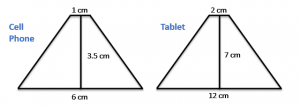
- Cut out along the lines, and tape four trapezoids together as shown in the picture below.

- Add the last piece of tape between the third and fourth trapezoid to form a pyramid.
How to run the demo:
- Go to this link or google “Pepper’s Pyramid Videos” to find a video that you like. The best videos will have a bright foreground and a black background.
- Place the center of the pyramid on the center of your screen, turn down the room lights, turn up the brightness on your screen, and play the video.
- When viewed edge-on, you will see a “floating” image!
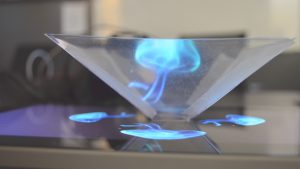
What’s happening?
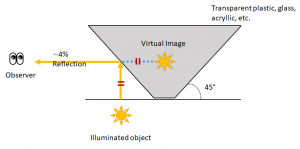
When light from a bright object (produced by the phone or tablet screen) reaches the transparent material, a portion of the light will reflect. For typical plastic, glass, or acrylic, this will be about a 4% reflection. An observer looking at the side of the Pepper’s Pyramid will then see a virtual image, an object that appears to float inside of the pyramid.
The reflection that you see is from one side of the pyramid. Having four sides allows the illusion to be seen from all angles, and seeing the other edges adds to the illusion that the floating image is contained by the pyramid.
Try this:
- Lift up the pyramid off of the screen. Can you still see the image inside?
- Flip the pyramid upside down. What happens to the image?
- If the pyramid will not stand on its own, try adjusting the sides and tape them together again.
- Check out all four sides. Is there a direction where the image is dim or barely visible? This means your screen must be linearly polarized!
Tips:
- Be sure the screen is as bright as possible for the best image, and that the video is playing at fullscreen.
- The phone-sized pyramid can be folded to be safely carried in your wallet!
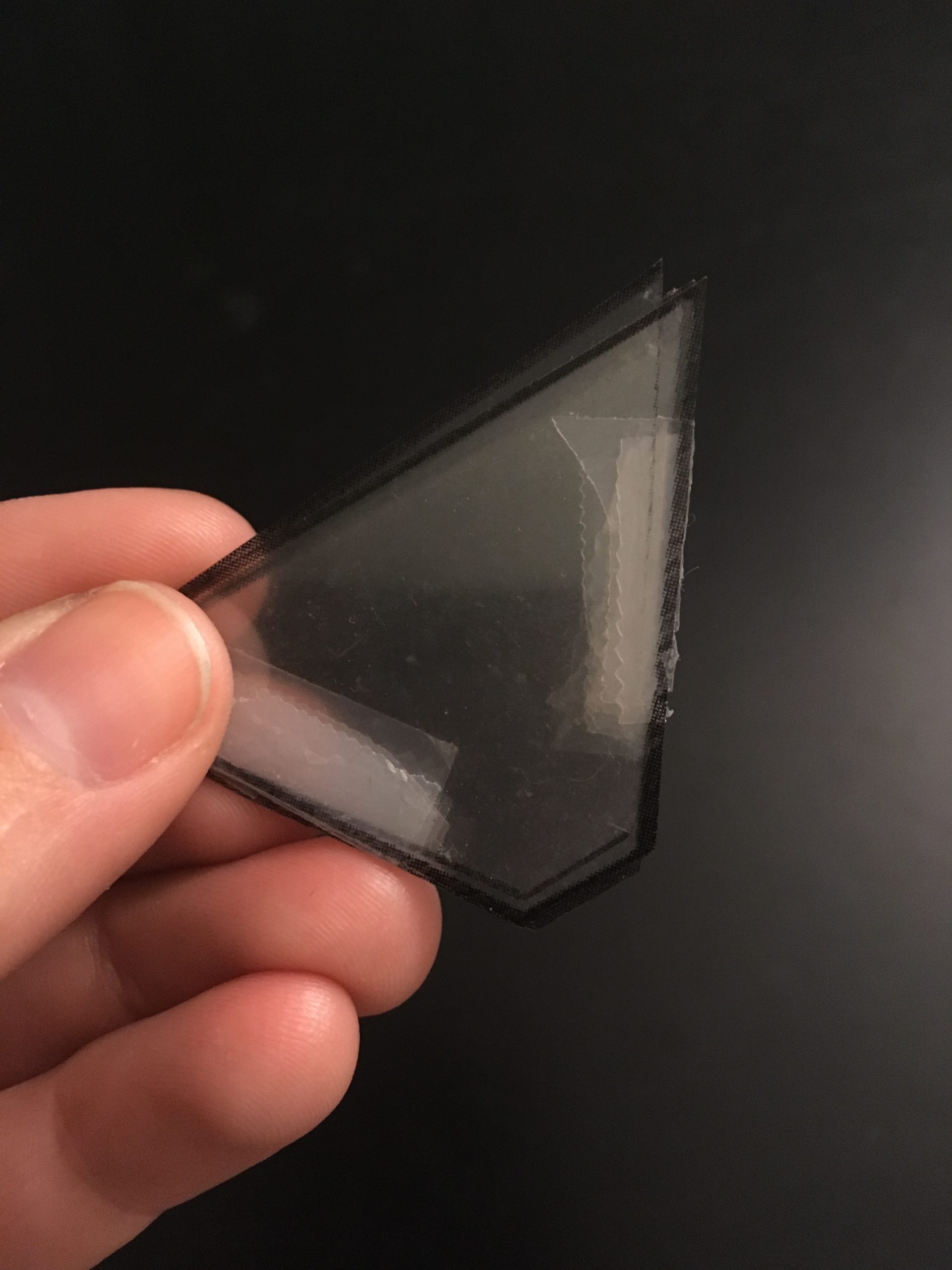
Note: This is not a hologram!
In optics, the word “hologram” indicates that there is encoded phase information. An entire scene can be captured by a hologram such that an image changes with different viewpoint, and the creation of a hologram requires a recording medium and two separate laser beams. These Pepper’s pyramid projectors use reflection to create a virtual image and are not technically holograms, though they will be commonly recognized as “holograms” in popular culture.
Real-World Applications
Teleprompters
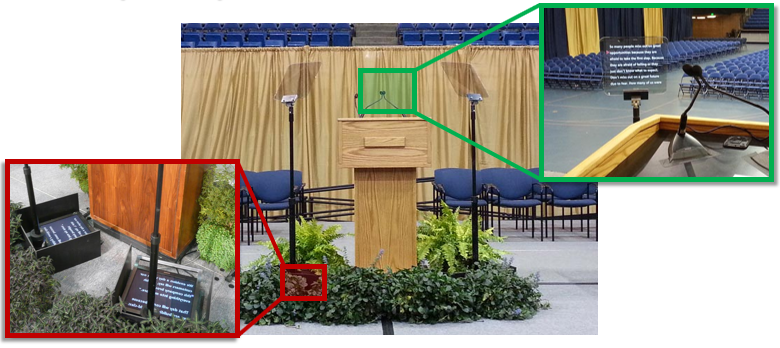
Entertainment Industry
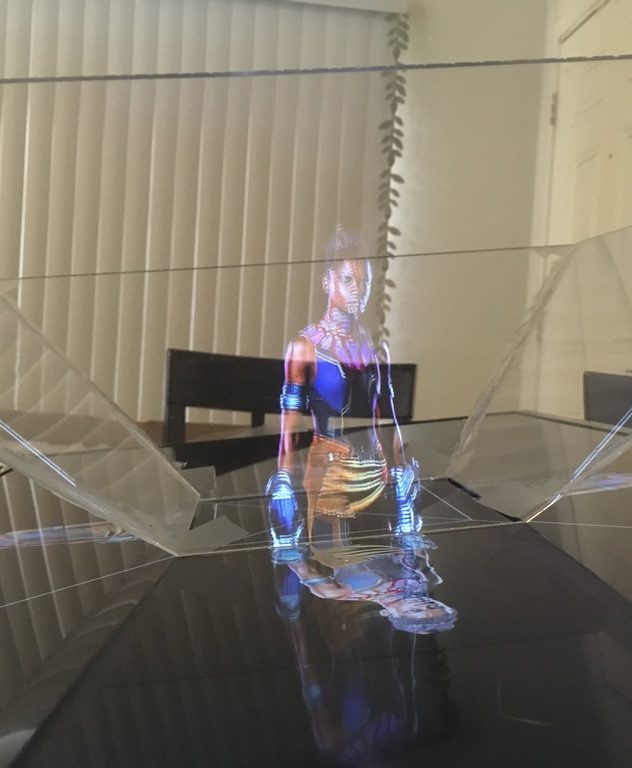
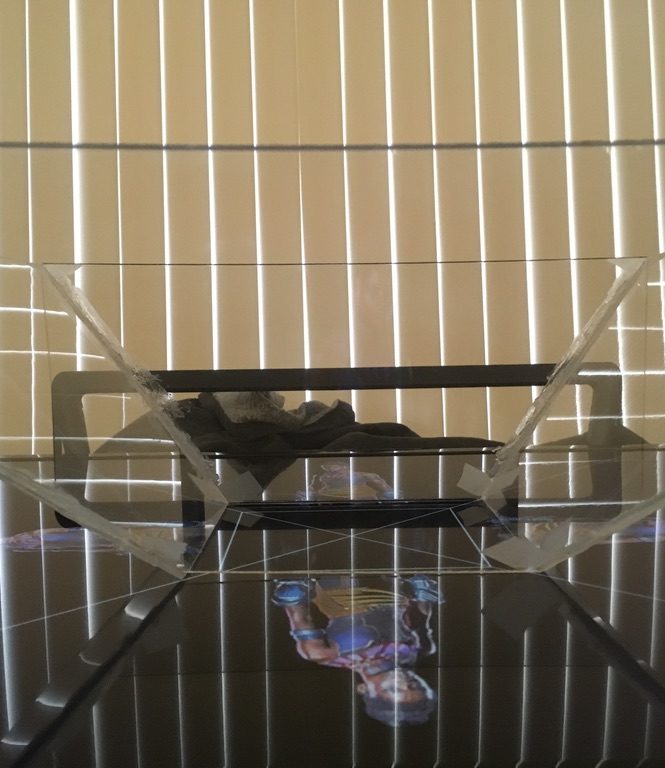
To learn more: (external links)
This activity was inspired by DaNel Hogan of The STEMAZing Project, including their #STEMonthecheap initiative.
Full Page Template for printing pyramids sized for cell phones. Tip: Print in “actual size” and cut edge-to-edge to minimize wasted space.
Laser Printer Transparency Film

